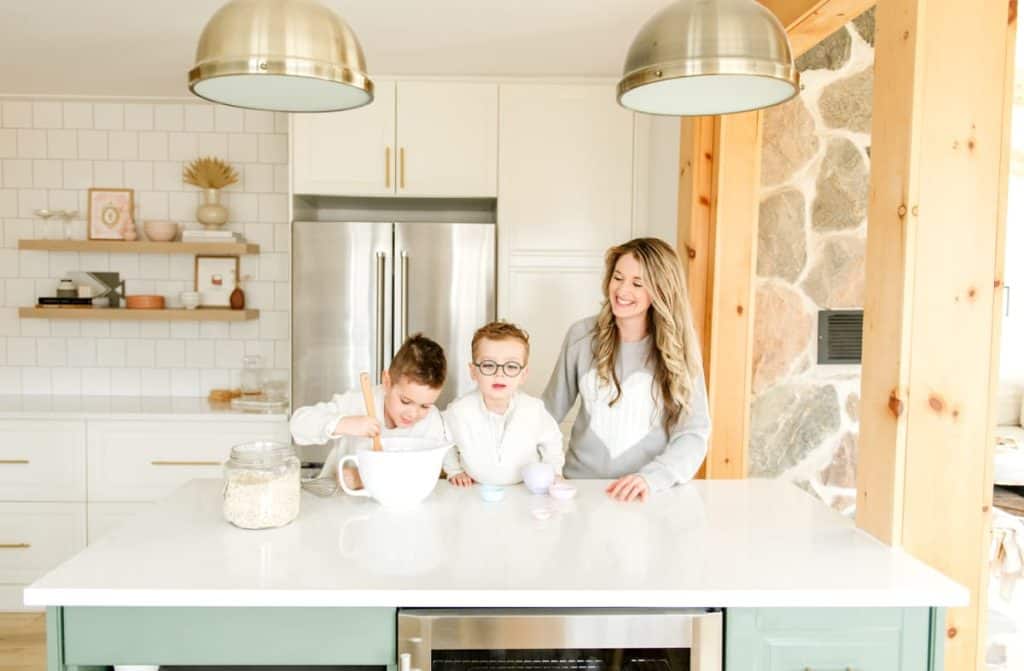As an Amazon Associate I earn from qualifying purchases. I get commissions for purchases made through links in this post.
Scrambled eggs for baby are an easy and delicious first food! Scrambled eggs are baby led weaning friendly and a great finger food since they’re so soft and fluffy!
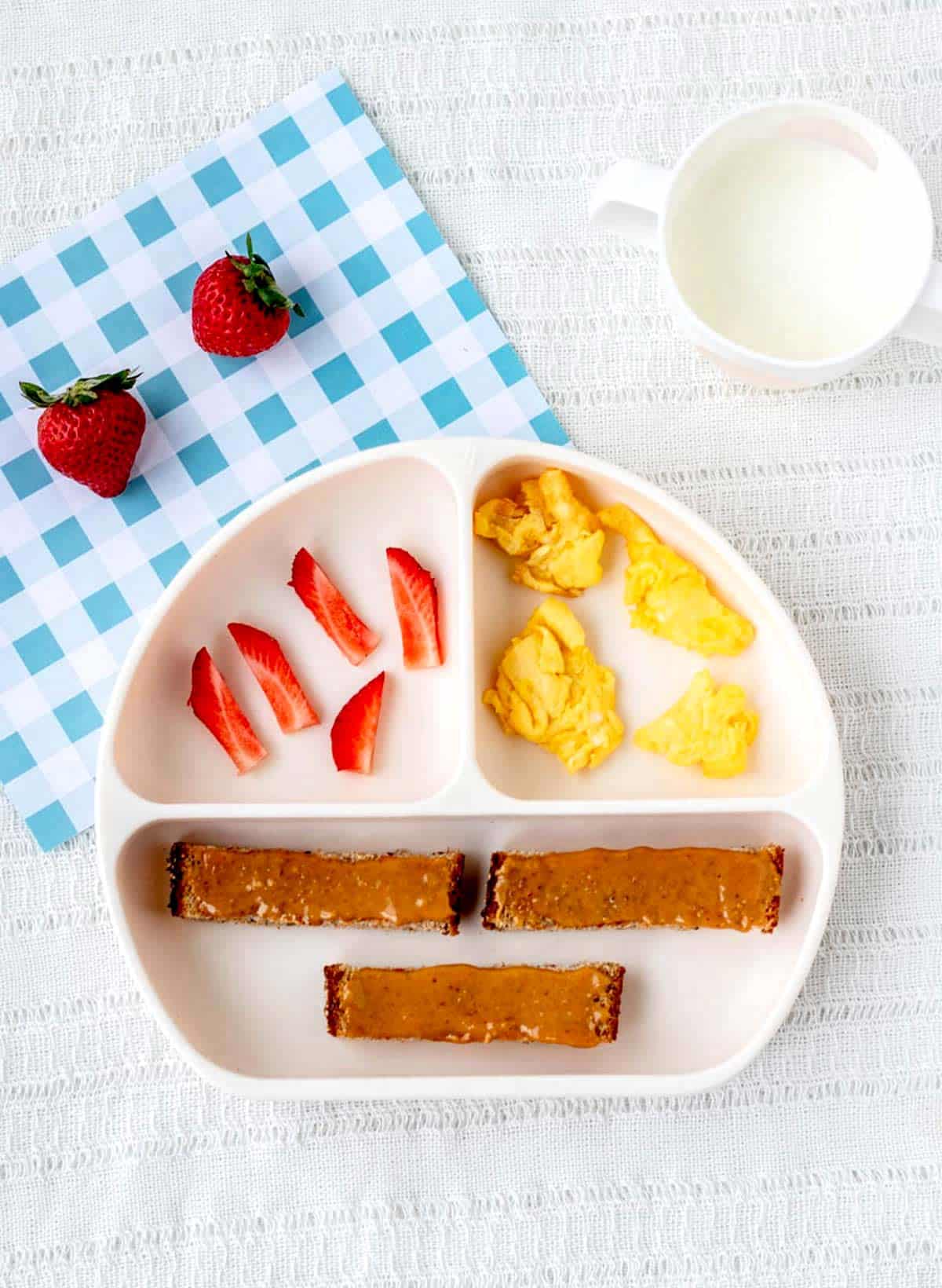
Scrambled Egg RECIPE for BabY– 6 Months & Beyond!
Scrambled eggs with yogurt are a quick and simple meal for baby. Not only are eggs cost-effective, but they are packed with important nutrients and healthy fats for a growing baby!
Eggs contain iron, folate, omega 3 fatty acids, and protein. Iron aids in moving oxygen from your lungs to the rest of your body, folate helps with cell growth, omega 3 fatty acids support brain growth, and protein helps support overall growth.
Serving eggs as a first food is a great way to make sure your little one gets all of these important nutrients in their diet and to pre-empt any potential egg allergies.
When Can Babies Eat Eggs?
Jointly the American Academy of Allergy, Asthma, and Immunology (source) and the Canadian Pediatric Society (source) recommends introducing eggs around 6 months of age, but not before 4 months to prevent an egg allergy.
In fact, introducing eggs earlier in a baby’s feeding journey can actually help prevent them from developing an egg allergy later on.
Just a few things to keep in mind if you’re hesitant about introducing eggs (or any of the other top allergens):
- When introducing eggs for the first time, start with a small amount and watch closely for a reaction or sensitivity. Continue serving eggs a few times a week once the food has been introduced to your baby’s diet.
- If baby has a mild reaction to eggs, consult your health care provider to follow up. If your baby has trouble breathing or seems lethargic, contact emergency services to respond to an allergic reaction.
- For babies that have severe eczema or another food allergy, consult your doctor before introducing eggs.

Why We Love These Scrambled Eggs with Yogurt
- Soft: These fluffy scrambled eggs are soft thanks to the addition of Greek yogurt, making them a perfect food for baby-led weaning.
- Easy to hold: The easy scrambled eggs have just enough texture for babies to handle and bring to their mouths.
- Nutritious: Eggs are packed with protein, essential fats, B vitamins, Vitamin D, folate and choline, which are all very important for developing infants’ bodies and brains.
Ingredient Notes
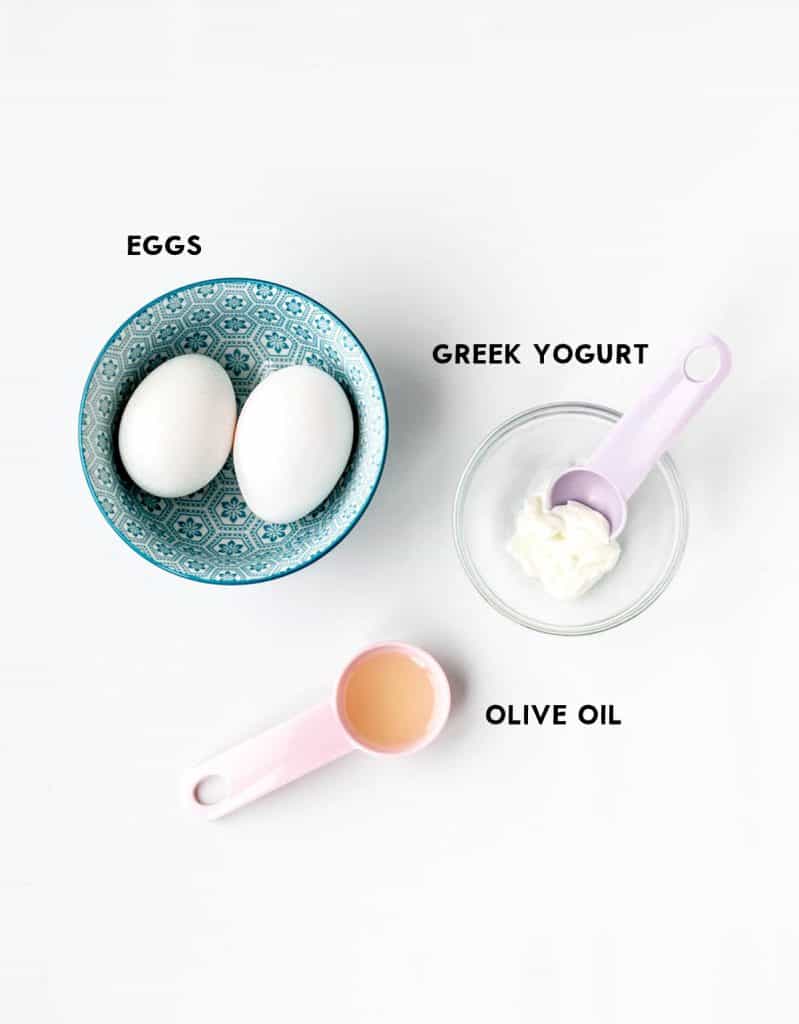
- Eggs: Choose any type of raw eggs; brown or white contain the same nutritional properties. If it’s in your budget, omega-3 enriched eggs are also a good option.
- Greek Yogurt: Use full fat plain Greek yogurt or sub in regular full-fat yogurt or whole milk. To make dairy-free fluffy eggs, use full fat coconut or soy yogurt. For more information, check out this article on the best yogurt for babies.
- Mild Olive Oil or Butter: To grease the pan, use a mild tasting olive oil or butter. Fat is important for baby’s developing brain.
How to Make Scrambled Eggs for Baby – Step by Step
- Whisk the eggs and Greek yogurt together in a medium bowl.

- In a medium nonstick skillet (8 inches or smaller), heat the oil or butter over low to medium heat. When butter is melted and the pan is hot, add the whisked eggs.
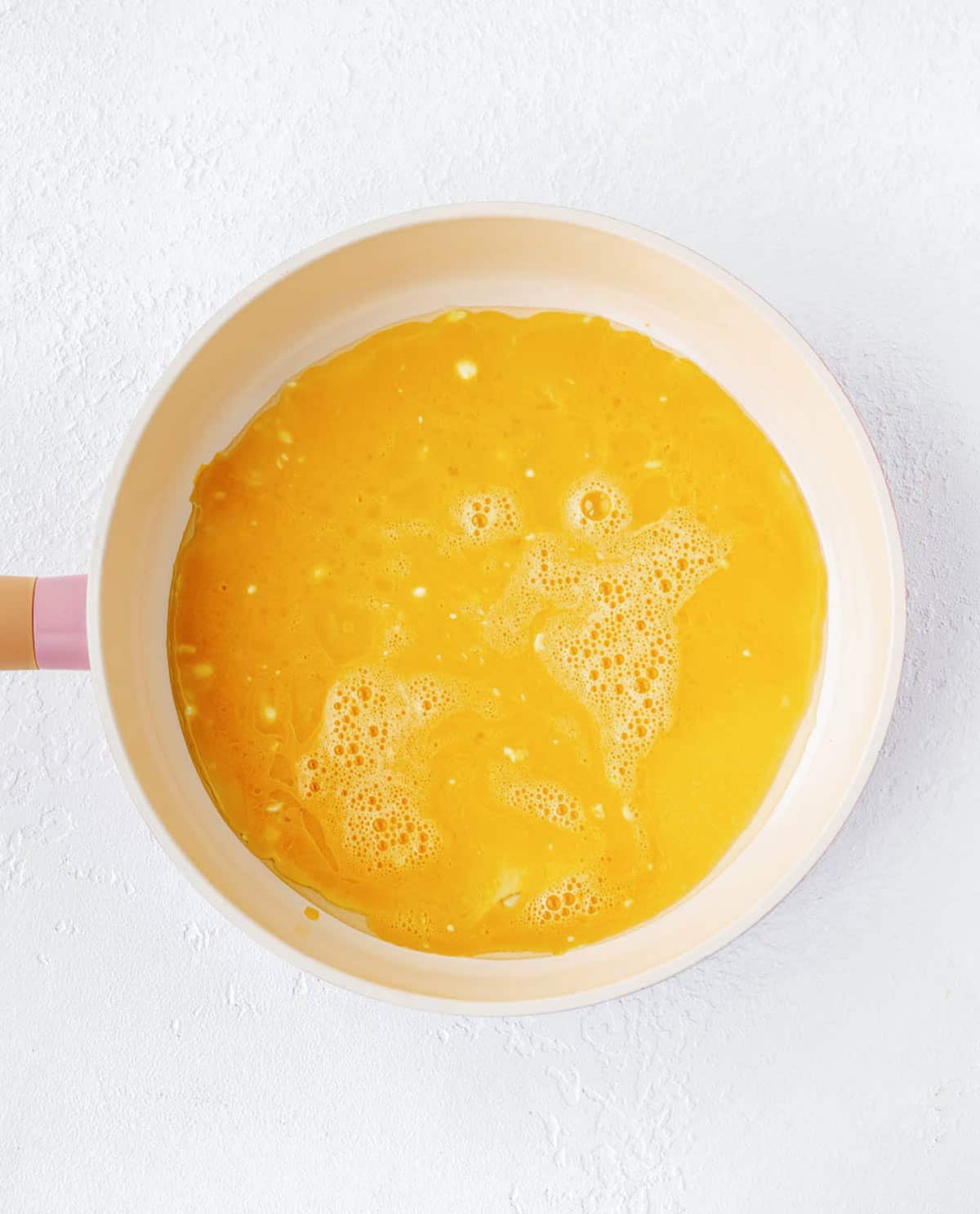
- Once eggs have set slightly, use a rubber spatula to gently move the eggs around in the pan until no longer liquid, about 3-4 minutes.
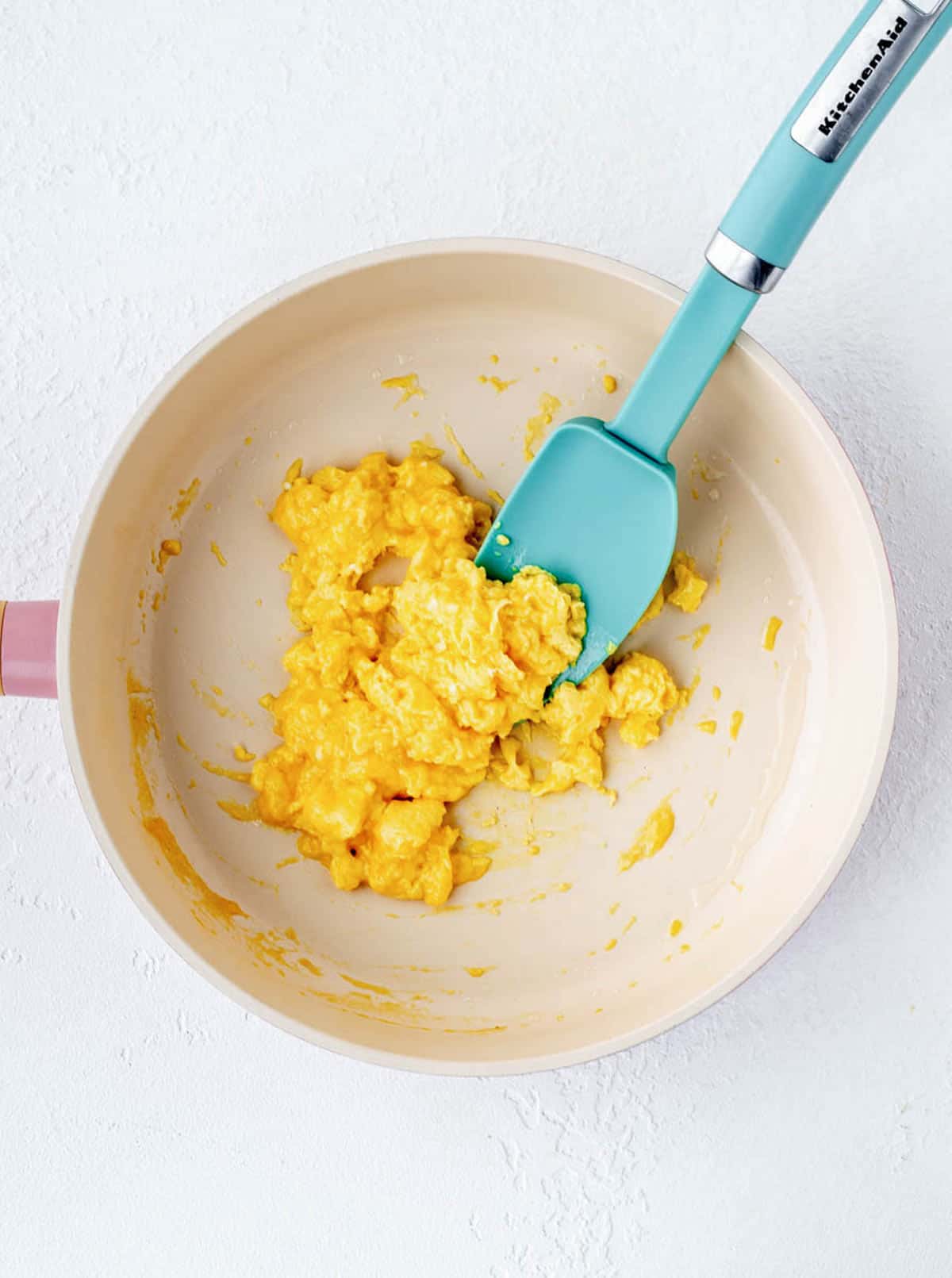
- When eggs have cooked, remove them from the pan. Let cool for a few minutes before serving.
Don’t overcook the eggs or cook them over too high of a heat setting since they’ll turn out more dry and crusty around the edges rather than nice creamy curds. Instead, cook them low and slow for the fluffiest eggs. We want the egg to be nice and soft for baby.

Keep scrolling to the recipe card below for the full printable recipe!
TIPS FOR THE BEST SCRAMBLED EGGS
- Use whole milk Greek yogurt since it will lend a creamier texture to the eggs. Also, the extra fat is needed to support baby’s central nervous system and overall growth and development.
- Break the scrambled eggs up with the spatula in an appropriate size for the baby’s age. Keep the scrambled egg pieces slightly larger for babies 6-9 months so that they can grasp the egg pieces with their palm. For older babies, ages 9 months and up, you can break up the scrambled egg into slightly smaller pieces since they’ll be able to use a pincer grip to eat the egg pieces with their fingers.
- If some of the scrambled egg pieces are too small for baby to grasp, you can always stick the smaller pieces to toast strips covered in a thin layer of mashed avocado or natural peanut butter.
- Take the eggs off the heat just before they’re fully cooked to take into account the carry-over cooking that occurs. The eggs will still continue to cook as long as they’re in the hot pan.
- Don’t use too large of a pan as the egg mixture will spread too thin, resulting in less fluffy curds of egg. For best results, use a pan that’s 8 inches or smaller.
- For best results, use a wooden spoon or silicone spatula to move around the egg mixture as it makes it easier to swirl them around without damaging the pan.
- If older children and adults are eating these eggs as well, you may wish to add a little sprinkle of salt and pepper to enhance the flavour.
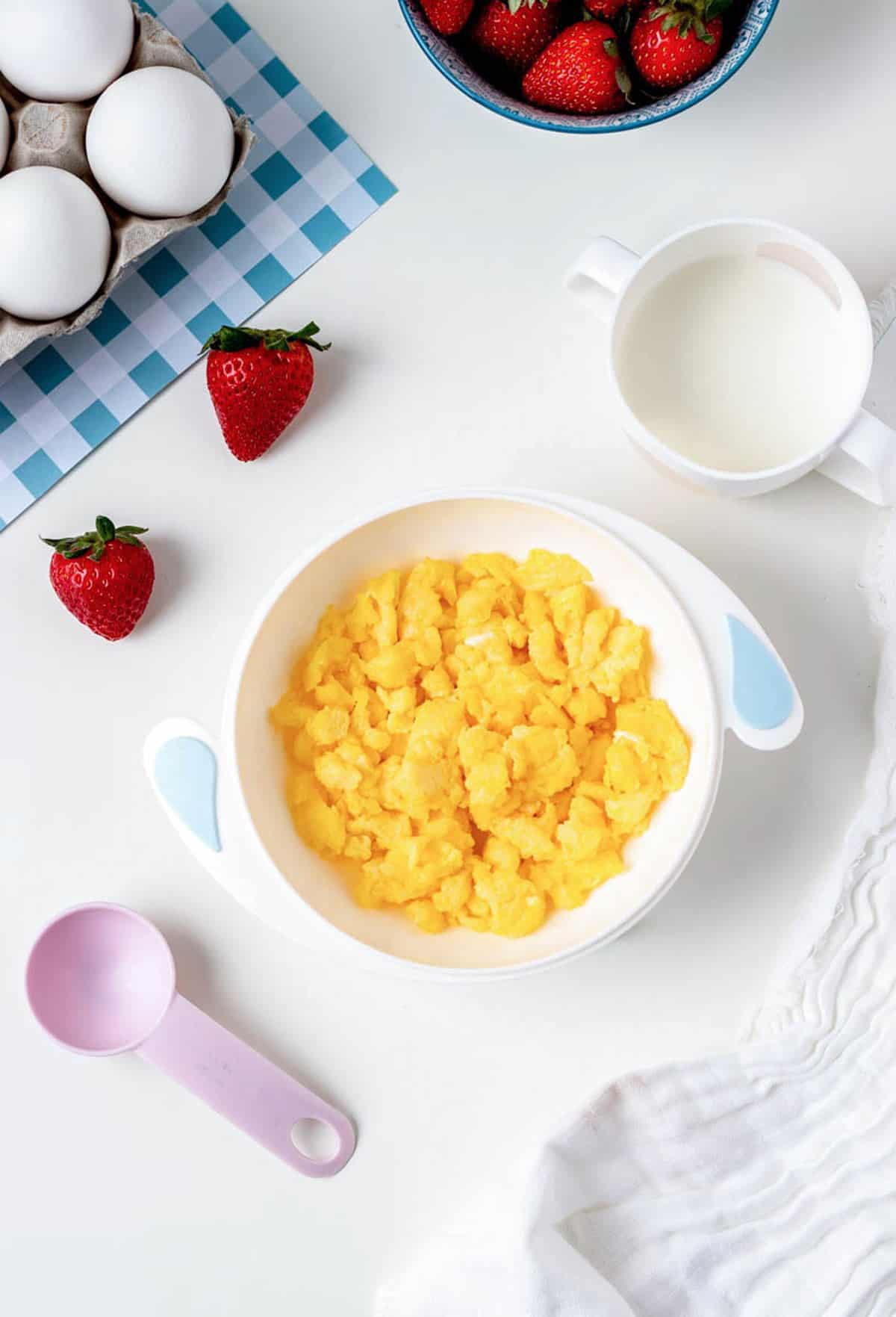
Recipe FAQs
To make fluffy scrambled eggs, make sure you whisk them well to incorporate more air into the egg mixture and cook them slowly over low heat. Remove eggs from heat just before they are fully cooked, as they will continue to cook in the residual heat after being removed.
The best pan for scrambled eggs is a medium skillet, ideally nonstick. You can use a small pan, but anything less than 8 inches works well. A larger pan will allow the eggs to spread out too much, making it hard to get the perfect scramble. Be sure to let the pan heat up before you add the eggs.
Scrambled eggs freeze well. Be sure to remove them from the heat when they still have a little bit of moisture present; this will help them freeze better. Fully cool the eggs before placing them in a freezer safe bag. Frozen scrambled eggs are good for up to 3 months.
Scrambled eggs can be reheated in the microwave in 20-30 second increments. Since it’s so easy to make this scrambled egg recipe, you can make a large quantity and freeze them for later. For an easy, nutritious breakfast for babies and toddlers, reheat the amount of small pieces your little one will eat in a sitting.
Storage Guidelines
- Store cooked, cooled eggs in a shallow, sealed airtight container for up to 4 days in the fridge.
How to Serve Eggs for BLW
How you serve the scrambled eggs will depend on your baby’s age and stage of development. Here are some examples of how to serve them up:
Scrambled Egg for 6 Month Old
For babies 6 months old, offer thin long strips of scrambled egg.
Babies this age will use the palmer grasp to grab chunks of food and bring them to their mouths. At this age, babies might need a lot of practice before being able to actually eat eggs.
It’s beneficial to their development to expose babies to a new food and texture, so try serving the smallest amount of eggs to minimize waste while still making them easy to grab with their palm.
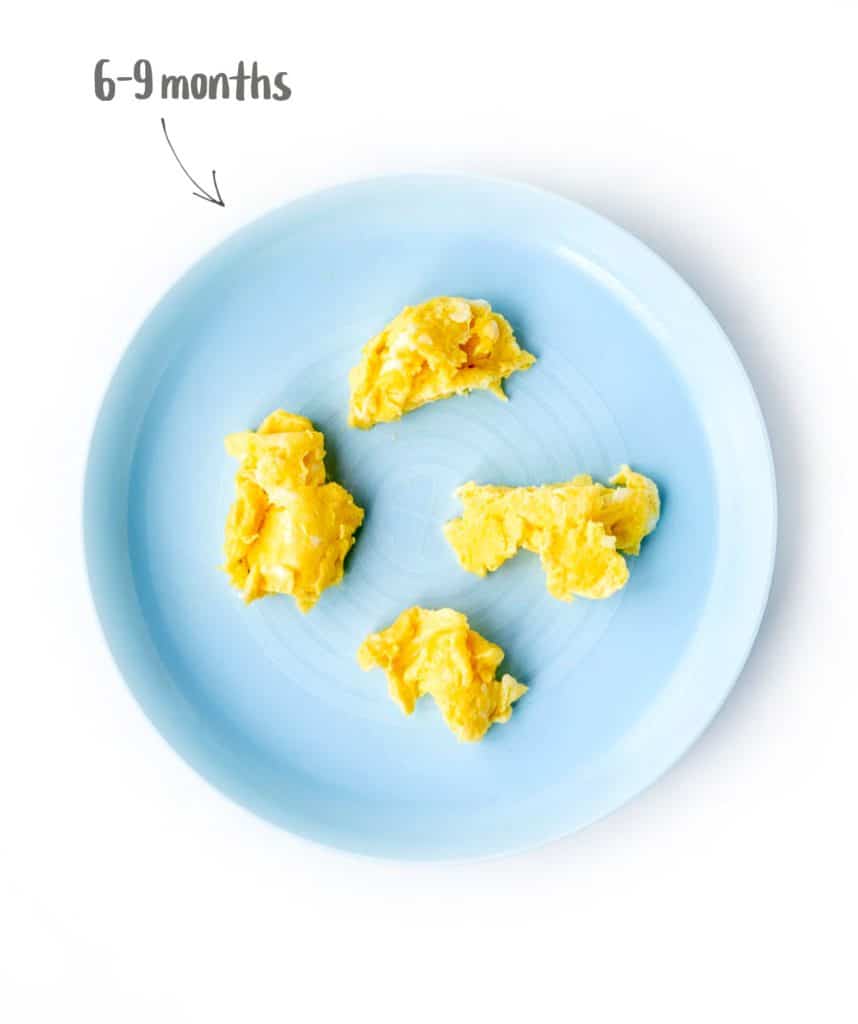
Scrambled Egg for 9 Month Old
Once babies reach 9 months, they start to develop a pincer grasp where they can use their thumb and forefinger to grab small chunks of solid foods.
Offer scrambled egg cut into bite-sized pieces to give your little one a chance to practice using their pincer grasp.
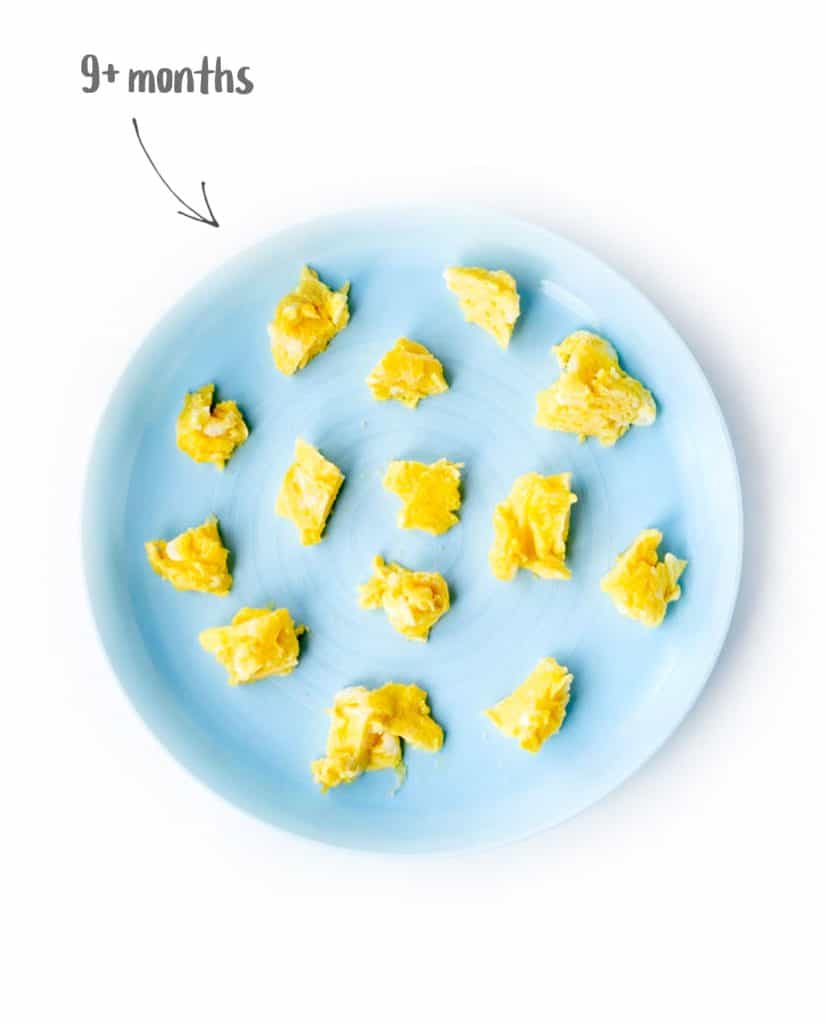
What to Add to Scrambled Eggs
If you’d like to get a little bit more adventurous with your scrambled eggs for baby, feel free to experiment with different flavours. Here are some ideas!
- Add shredded pasteurized cheese like cheddar cheese
- Some very finely chopped chives
- Try adding some finely chopped baby spinach to introduce additional flavours and nutrients
- For even more omega-3 fatty acid, add extra egg yolks
What to Serve with Scrambled Eggs
- Serve scrambled eggs with banana, strawberries, blueberries, or avocado
- Thinly sliced toast with natural peanut butter or mashed avocado
- Mini muffins (like these ABC Muffins)
- Strips or pieces of these 3-ingredient Banana Oatmeal Bars
- 3-Ingredient Protein Waffles cut into strips
- BLW overnight oats
- Blueberry Oat Balls
- Baby Led Weaning Banana Bread
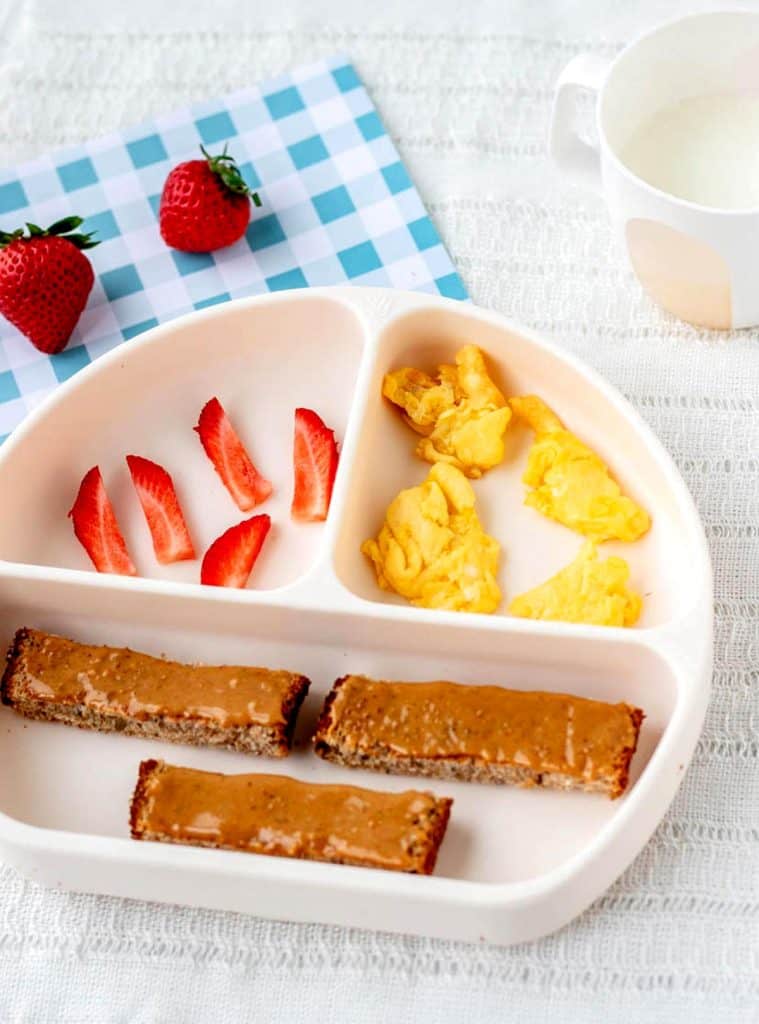
Recipe Variations
- To make dairy-free: Use full-fat plant based Greek yogurt or coconut yogurt.
- For cheesy scrambled eggs: Sprinkle on shredded cheese while cooking the eggs.
- Dairy alternatives: No Greek yogurt? Try regular full-fat yogurt or whole cow’s milk instead.
More Similar Posts
- Mini Egg Bites
- Banana French Toast
- How to Cut Strawberries for Babies
- BLW Overnight Oats
- 3-Ingredient Protein Waffles
Did you make this recipe? Scroll down to leave a star rating and review!
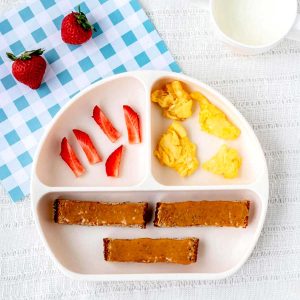

Fluffy Scrambled Eggs for Baby (6+ Months)
Ingredients
- 2 large eggs
- 2 teaspoons full-fat plain Greek yogurt
- 1/2 tablespoon mild olive oil or butter
Instructions
- In a medium bowl, use a whisk or fork to whisk together the eggs and Greek yogurt until combined.
- Heat butter or oil In a medium nonstick pan over medium-low heat. Once heated and butter is completely melted, add the eggs.
- When eggs start to set, use a rubber spatula to gently move the cooked egg around in the pan for about 3-4 minutes or until no longer liquidy. Try not to break up the egg curds too much.
- When the eggs are cooked, remove from the pan. Allow to cool for several minutes before serving.
Notes
- Use whole milk Greek yogurt since it will lend a creamier texture to the eggs. Also, the extra fat is needed to support baby’s central nervous system and overall growth and development.
- Break the scrambled eggs up with the spatula in an appropriate size for the baby’s age. Keep the scrambled egg pieces slightly larger for babies 6-9 months so that they can grasp the egg pieces with their palm. For older babies, ages 9 months and up, you can break up the scrambled egg into slightly smaller pieces since they’ll be able to use a pincer grip to eat the egg pieces with their fingers.
- If some of the scrambled egg pieces are too small for baby to grasp, you can always stick the smaller pieces to toast strips covered in a thin layer of mashed avocado or natural peanut butter.
- Take the eggs off the heat just before they’re fully cooked to take into account the carry-over cooking that occurs. The eggs will still continue to cook as long as they’re in the hot pan.
- Don’t use too large of a pan as the egg mixture will spread too thin, resulting in less fluffy curds of egg. For best results, use a pan that’s 8 inches or smaller.
- For best results, use a wooden spoon or silicone spatula to move around the egg mixture as it makes it easier to swirl them around without damaging the pan.
- If older children and adults are eating these eggs as well, you may wish to add a little sprinkle of salt and pepper to enhance the flavour.

